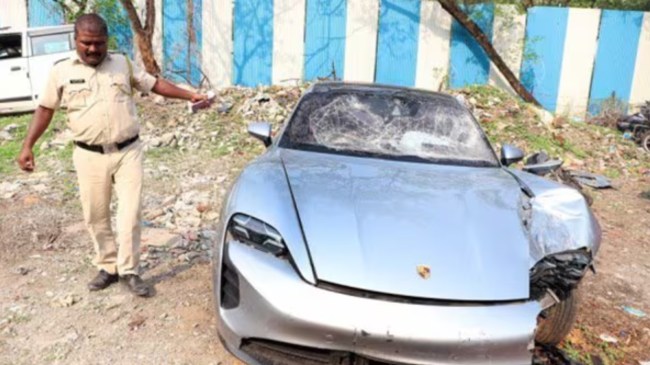Opinion Pune Porsche case: Is the outrage over bail to minor justified?
From a legal point of view, it can reasonably be argued that the release of the minor on bail was consistent with the bail provisions laid down in the Juvenile Justice Act. But the Board was criticised for taking such a view
 Although the police enforce traffic rules and regulations, drunken driving and speeding — two major contributing factors to road accidents — are commonplace in the country. Express photo
Although the police enforce traffic rules and regulations, drunken driving and speeding — two major contributing factors to road accidents — are commonplace in the country. Express photo Among several details that have caused outrage about the Pune Porsche case is the fact that the 17-year-old was granted bail by a juvenile court merely hours after the incident. In the harrowing incident that took place around 3 am on May 19, the minor, son of a wealthy Pune builder, ran over and killed two young IT professionals on a motorbike. The minor was driving his father’s unregistered Porsche, he did not have a licence to drive; he was reportedly under the influence of alcohol; and CCTV footage shows that he was speeding at more than 150 km/per hour when returning from a bar.
According to media reports, an individual member of the Board granted bail to the minor on the same day of the accident stipulating some conditions including studying traffic rules and submitting a 300-word essay on “road accidents and their solution”. The shock and outrage among politicians, police officers and laypersons can be summed up by one expert’s comment on the Board’s order being “a mockery of justice”.
Amid this response, the Juvenile Justice Board cancelled the minor driver’s bail on May 22 and ordered his detention in an observation home till June 5. The state has also made an application to the Board under the Juvenile Justice (Care and Protection of Children) Act, 2015, seeking to try him as an adult and the heinous nature of the offence, considering his age.
There will be a long legal process before a decision is announced in the case. Yet, what has transpired so far highlights some important issues concerning juvenile justice and road accidents.
The first point is about the process of criminal justice itself. Ideally, the police and judicial processes are distinguished from punishment (such as fines and sentences). However, both bodies essentially impose pains, burdens and costs in the name of protecting the accused/defendants from undeserved punishment. Hence the title of Malcolm Feeley’s book, The Process is the Punishment.
On the other hand, the Pune Porsche case seems to demonstrate that there is a strong public expectation, when it comes to grave offences committed by children, that the judicial process include punishment in the form of denial of bail. From a legal point of view, it can reasonably be argued that the release of the minor on bail was consistent with the bail provisions laid down in the Juvenile Justice Act. But the Board was criticised for taking such a view. This might influence Juvenile Justice Boards across the country to apply the law on bail in a manner that is stricter than the law actually mandates — that is if they have not been doing so already.
Second, the bail controversy draws attention to a larger point, which is that juvenile justice continues to be seen largely through the lens of deterrence and individual culpability of children. The police have indeed arrested the minor’s father for wilful neglect of his son and action has been taken against the two establishments for serving alcohol to underage persons. That said, the outcry against bail given to the juvenile indicates that criminal proceedings initiated against those who enabled and contributed to the incident would not by themselves be considered sufficient.
Finally, this case spotlights a critical weakness in the criminal justice approach to road accidents. Although the police enforce traffic rules and regulations, drunken driving and speeding — two major contributing factors to road accidents — are commonplace in the country. This suggests the need to intensify enforcement efforts. At the same time, in a country that has one of the highest road accident fatalities in the world, interventions must be concentrated on an area where the need is most urgent: Preventing the preventable.
According to an official report, only one per cent of drivers who are speeding are stopped and handled. In the case of drunk driving, the percentage is less than 0.5. This must change. No amount of ruthless bail orders can help here.
It would be erroneous to assume that complex behavioural and social factors behind drunken driving and speeding can be addressed by formal deterrent measures alone. Informal means to influence the minds of young people are equally necessary, such as a combination of persuasion, encouragement, expectations and social pressure. A case in point is the effectiveness of public pressure on the issue of bail here.
The writer is a senior IPS officer and currently working as Professor of Practice, Lloyd Law College, Greater Noida on deputation. Views are personal






